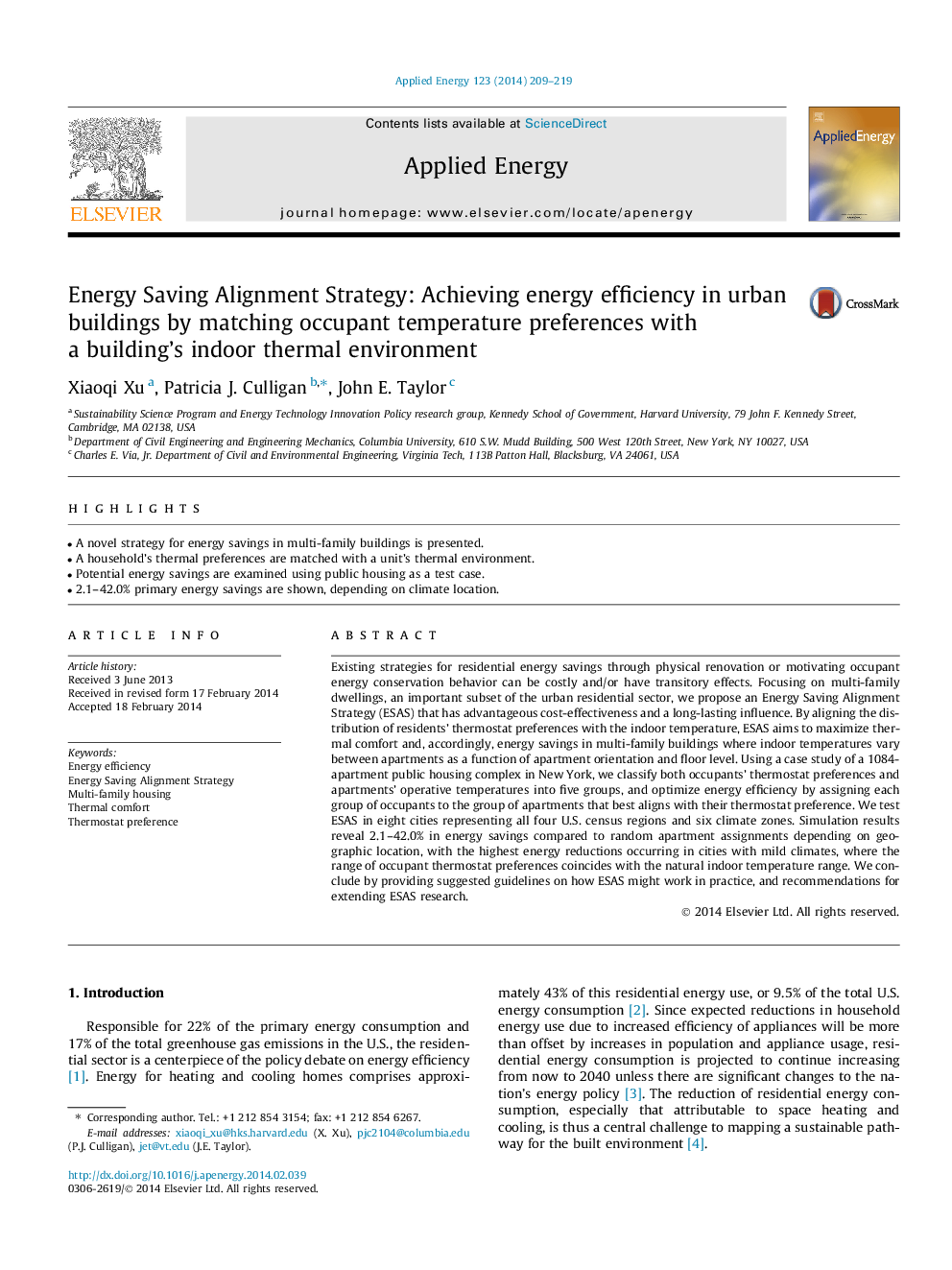| کد مقاله | کد نشریه | سال انتشار | مقاله انگلیسی | نسخه تمام متن |
|---|---|---|---|---|
| 6690407 | 501905 | 2014 | 11 صفحه PDF | دانلود رایگان |
عنوان انگلیسی مقاله ISI
Energy Saving Alignment Strategy: Achieving energy efficiency in urban buildings by matching occupant temperature preferences with a building's indoor thermal environment
ترجمه فارسی عنوان
استراتژی تطبیق صرفه جویی در انرژی: دستیابی به بهره وری انرژی در ساختمان های شهری با تطابق ترجیحات دماسنج با محیط حرارتی داخلی ساختمان
دانلود مقاله + سفارش ترجمه
دانلود مقاله ISI انگلیسی
رایگان برای ایرانیان
کلمات کلیدی
بهره وری انرژی، استراتژی تطبیق صرفه جویی در انرژی، مسکن چند خانوادگی، راحتی حرارتی، اولویت ترموستات،
موضوعات مرتبط
مهندسی و علوم پایه
مهندسی انرژی
مهندسی انرژی و فناوری های برق
چکیده انگلیسی
Existing strategies for residential energy savings through physical renovation or motivating occupant energy conservation behavior can be costly and/or have transitory effects. Focusing on multi-family dwellings, an important subset of the urban residential sector, we propose an Energy Saving Alignment Strategy (ESAS) that has advantageous cost-effectiveness and a long-lasting influence. By aligning the distribution of residents' thermostat preferences with the indoor temperature, ESAS aims to maximize thermal comfort and, accordingly, energy savings in multi-family buildings where indoor temperatures vary between apartments as a function of apartment orientation and floor level. Using a case study of a 1084-apartment public housing complex in New York, we classify both occupants' thermostat preferences and apartments' operative temperatures into five groups, and optimize energy efficiency by assigning each group of occupants to the group of apartments that best aligns with their thermostat preference. We test ESAS in eight cities representing all four U.S. census regions and six climate zones. Simulation results reveal 2.1-42.0% in energy savings compared to random apartment assignments depending on geographic location, with the highest energy reductions occurring in cities with mild climates, where the range of occupant thermostat preferences coincides with the natural indoor temperature range. We conclude by providing suggested guidelines on how ESAS might work in practice, and recommendations for extending ESAS research.
ناشر
Database: Elsevier - ScienceDirect (ساینس دایرکت)
Journal: Applied Energy - Volume 123, 15 June 2014, Pages 209-219
Journal: Applied Energy - Volume 123, 15 June 2014, Pages 209-219
نویسندگان
Xiaoqi Xu, Patricia J. Culligan, John E. Taylor,
